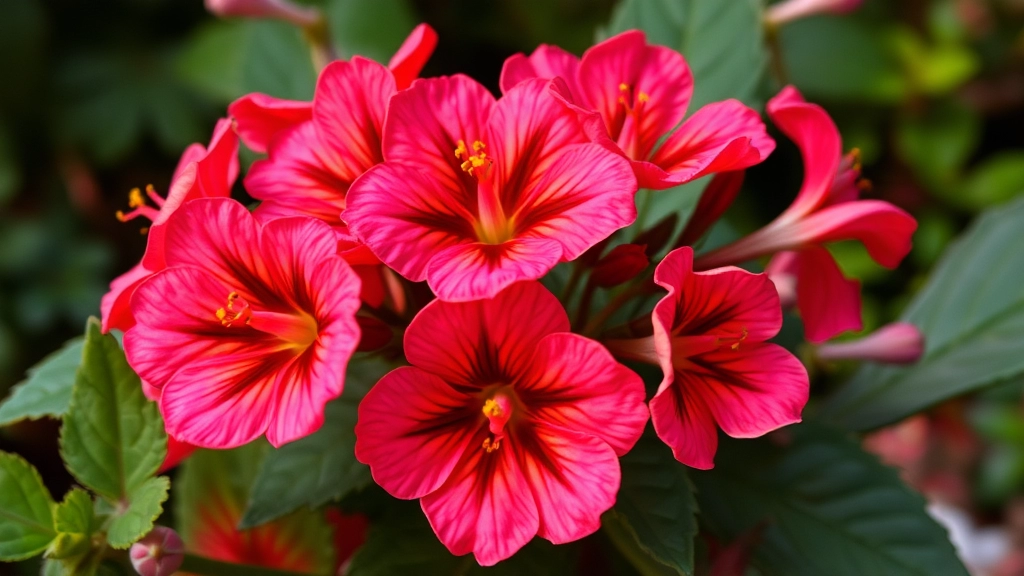Kalanchoe Care: Reviving Your Flowers
Are your Kalanchoe flowers dying and you’re not sure why? Don’t worry; you’re not alone. Many factors can contribute to the decline of these beautiful blooms, but with a bit of knowledge, you can bring them back to life. Overwatering, improper sunlight, and pest infestations are common culprits, and understanding these issues is the first step to reviving your plant.
Specific Issues to Consider
Let’s dive into the specifics. Overwatering can lead to root rot, cutting off essential nutrients to your Kalanchoe. On the flip side, underwatering can cause wilting and flower loss. Ensuring your plant gets the right amount of sunlight is also crucial; too much or too little can be detrimental. Additionally, keeping an eye out for pests and ensuring your soil is well-drained can make all the difference.
Ready to Save Your Kalanchoe?
Let’s get started!
Common Reasons for Kalanchoe Flower Death
When it comes to caring for Kalanchoe flowers, many of us find ourselves asking, “Why are my Kalanchoe flowers dying?” This concern is common among plant enthusiasts, and understanding the reasons behind flower death can help us provide better care.
Overwatering and Underwatering
One of the primary culprits for Kalanchoe flower death is improper watering.
- Overwatering: This can lead to root rot, a condition where the roots become waterlogged and start to decay. Signs include yellowing leaves and a mushy stem.
- Underwatering: Conversely, if the plant doesn’t receive enough water, it can wilt and dry out, leading to flower loss. Look for shrivelled leaves as a warning sign.
Insufficient or Excessive Sunlight
Light conditions play a crucial role in the health of Kalanchoe flowers.
- Too Much Sunlight: While Kalanchoe loves bright light, too much direct sunlight can scorch the leaves, causing them to drop and flowers to wilt.
- Too Little Sunlight: A lack of adequate light can lead to leggy growth and fewer blooms. If your Kalanchoe is stretching towards the light, it’s time to adjust its position.
Soil Requirements
The type of soil you use can significantly impact Kalanchoe health.
- Well-Draining Soil: Kalanchoe thrives in a well-draining potting mix. Heavy soils can trap water, leading to root issues.
- pH Level: A slightly acidic to neutral pH is ideal for optimal growth.
Pest Infestations
Pests can wreak havoc on your Kalanchoe flowers.
- Common Pests: Aphids, mealybugs, and spider mites can suck the life out of your plant. Check the undersides of leaves regularly.
- Prevention: Regularly inspect your plant and use insecticidal soap if you notice any signs of infestation.
Fungal Diseases
Fungal diseases, particularly root rot, can be detrimental.
- Symptoms: Look for wilting leaves and a foul smell from the soil.
- Prevention: Ensure proper watering practices and good air circulation around your plant.
Seasonal Care Tips
Seasonal changes can affect your Kalanchoe flowers.
- Winter Care: Reduce watering during the colder months, as the plant goes dormant. For more tips, check out our Winter Care Tips for Healthy Kalanchoe Plants.
- Summer Care: Increase watering slightly but ensure that the plant is not sitting in water.
Reviving Dying Kalanchoe Flowers
If your Kalanchoe flowers are struggling, don’t despair.
- Immediate Action: Assess watering habits and light conditions immediately.
- Rescue Techniques: Trim away dead leaves and provide a fresh potting mix if root rot is suspected. Learn more about Post-Bloom Kalanchoe Care.
Choosing the Right Fertilizer
Fertilization can either boost your Kalanchoe’s health or lead to over-fertilization.
- Balanced Fertilizer: Use a balanced, water-soluble fertilizer during the growing season.
- Frequency: Fertilize every 4-6 weeks, but avoid fertilizing during dormancy.
Impact of Overwatering and Underwatering on Kalanchoe Health
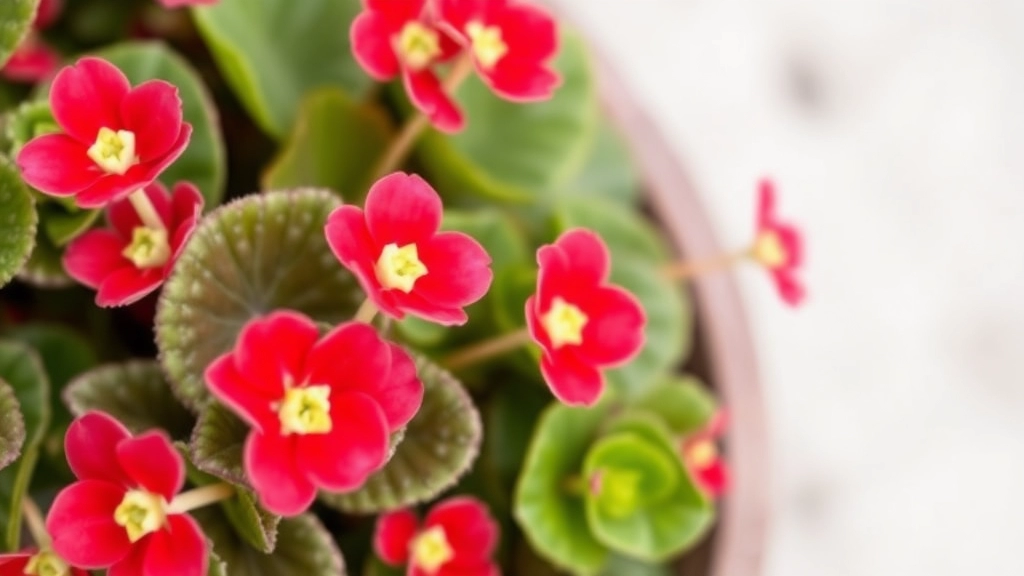
Ever found your Kalanchoe looking a bit sad? You’re not alone. One of the biggest culprits behind a droopy plant is the fine line between overwatering and underwatering.
Overwatering: The Silent Killer
Too much water can be a sneaky problem.
- Root Rot: This is the most common issue. When roots sit in soggy soil, they can’t breathe. They start to decay, leading to a wilting plant.
- Yellow Leaves: If you notice your Kalanchoe’s leaves turning yellow and mushy, it’s a clear sign of overwatering.
- Fungal Diseases: Excess moisture creates a perfect environment for fungi, leading to further health issues.
Underwatering: The Thirst Trap
On the flip side, underwatering can also spell disaster for your beloved plant.
- Shrivelling Leaves: If your Kalanchoe’s leaves look wrinkled or shriveled, it’s begging for a drink.
- Stunted Growth: A lack of water can slow down growth, leaving your plant looking less vibrant.
- Brittle Leaves: Dry, crispy leaves are a telltale sign that your Kalanchoe isn’t getting enough moisture.
Finding the Balance
So, how do you strike that perfect balance? Here are some tips:
- Check the Soil: Stick your finger about an inch into the soil. If it feels dry, it’s time to water.
- Drainage is Key: Ensure your pot has drainage holes to prevent excess water from sitting at the bottom.
- Watering Schedule: Aim for a routine, but adjust based on the season. Kalanchoes usually prefer to dry out a bit between waterings.
Signs of Insufficient or Excessive Sunlight
Many Kalanchoe owners often wonder why their plants aren’t thriving as expected. One common culprit is the amount of sunlight they receive.
Insufficient Sunlight:
- Leggy Growth: If your Kalanchoe is stretching towards the light, it’s a clear sign it’s not getting enough.
- Faded Colour: Healthy Kalanchoe leaves should be vibrant. If they appear dull or washed out, they may be craving more light.
- Reduced Flowering: A lack of adequate sunlight can lead to fewer blooms. If your plant is not flowering as it should, check its light exposure.
Excessive Sunlight:
- Leaf Scorching: Brown, crispy edges on leaves indicate too much sun. This is often accompanied by wilting.
- Leaf Drop: If your Kalanchoe starts shedding leaves, it might be reacting to excessive sunlight.
- Stunted Growth: An overexposed plant may stop growing altogether, as it struggles to cope with harsh conditions.
To ensure your Kalanchoe is getting the right amount of sunlight, aim for a balance. Ideally, they thrive in bright, indirect light. A south or west-facing window often works well, but be cautious of direct afternoon sun. For more detailed care tips, you can refer to the Ultimate Guide to Growing and Caring for Succulent Plant Kalanchoe or learn about the Optimal Watering Tips for Healthy Florist Kalanchoe.
Soil Requirements for Healthy Kalanchoe Growth
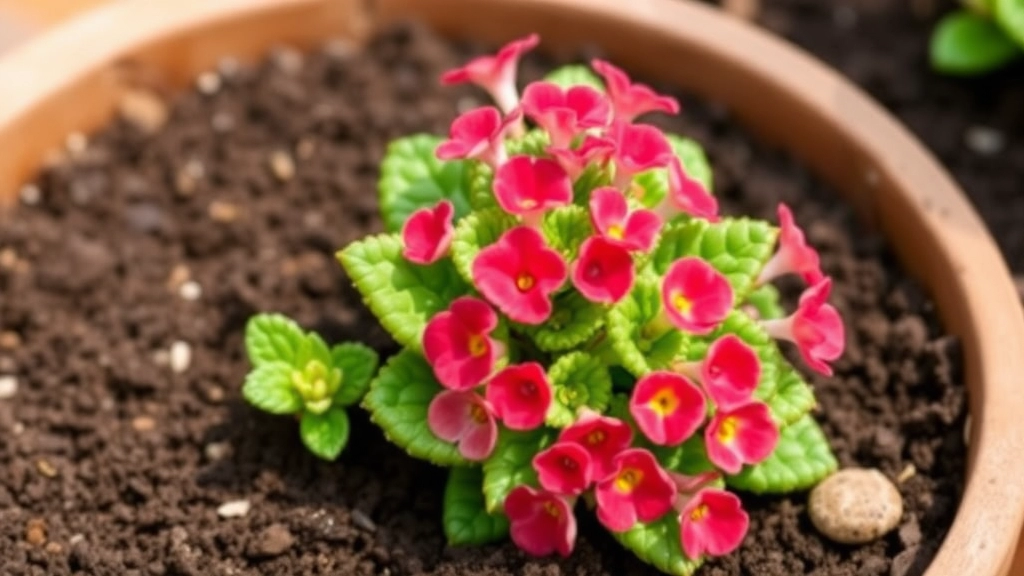
Have you ever wondered why your Kalanchoe flowers aren’t thriving? The soil you choose plays a pivotal role in their overall health.
Ideal Soil Composition
Kalanchoe plants flourish in well-draining soil that prevents water retention. Here’s what to look for:
- Cactus or Succulent Mix: These blends often contain sand, perlite, or pumice, ensuring excellent drainage.
- pH Level: Aim for a slightly acidic to neutral pH (around 6.0 to 7.0) for optimal growth.
- Organic Matter: Incorporating some organic matter can provide essential nutrients while still allowing for drainage.
Drainage is Key
Proper drainage is crucial for Kalanchoe:
- Pot Selection: Use pots with drainage holes to avoid water accumulation.
- Layering: Consider adding a layer of gravel or small stones at the bottom of the pot to enhance drainage.
Signs of Poor Soil Conditions
Keep an eye out for these warning signs:
- Yellowing Leaves: This may indicate overwatering or poor drainage.
- Stunted Growth: If your Kalanchoe isn’t growing, the soil might be too compacted or lacking nutrients.
Tips for Soil Maintenance
To keep your Kalanchoe thriving, consider the following:
- Repotting: Change the soil every couple of years to refresh nutrients.
- Soil Testing: Occasionally test the soil pH and adjust as needed with amendments.
How to Protect Kalanchoe from Pest Infestations
As we delve deeper into caring for Kalanchoe, it’s essential to consider how to shield these vibrant plants from pest infestations.
Common Pests Affecting Kalanchoe
Kalanchoe can be susceptible to a variety of pests, including:
- Aphids: Tiny, sap-sucking insects that can cause leaves to curl.
- Mealybugs: White, cotton-like pests that cluster in leaf joints.
- Spider Mites: Tiny arachnids that create fine webs and cause stippling on leaves.
- Scale Insects: Hard, shell-like pests that attach to stems and leaves.
Preventive Measures
To keep your Kalanchoe thriving, consider these preventive tips:
- Regular Inspections: Check your plants weekly for any signs of pests. Early detection can save your Kalanchoe.
- Maintain Cleanliness: Wipe down leaves with a damp cloth to remove dust and potential pests.
- Proper Air Circulation: Ensure your plants are not overcrowded; good airflow can deter pests.
- Companion Planting: Surround your Kalanchoe with pest-repelling plants like marigolds.
Natural Remedies
If you do spot pests, don’t panic. Here are some natural remedies:
- Neem Oil: Mix neem oil with water and spray on affected areas. It’s a natural insecticide that is safe for plants.
- Insecticidal Soap: This can effectively kill soft-bodied insects like aphids and mealybugs.
- Diatomaceous Earth: Sprinkle this powder around the base of your plant. It can deter crawling pests.
Chemical Treatments
If natural remedies don’t work, consider chemical options:
- Systemic Insecticides: These are absorbed by the plant and can kill pests that feed on it.
- Horticultural Oils: These can suffocate pests and are less harmful to beneficial insects.
By implementing these strategies, you can significantly reduce the risk of pest infestations and keep your Kalanchoe healthy and blooming. For more detailed care tips, check out our complete guide on caring for Kalanchoe succulents. Additionally, if you’re dealing with specific issues like soft leaves, our article on why Kalanchoe leaves turn soft could be helpful.
Preventing Root Rot and Other Fungal Diseases
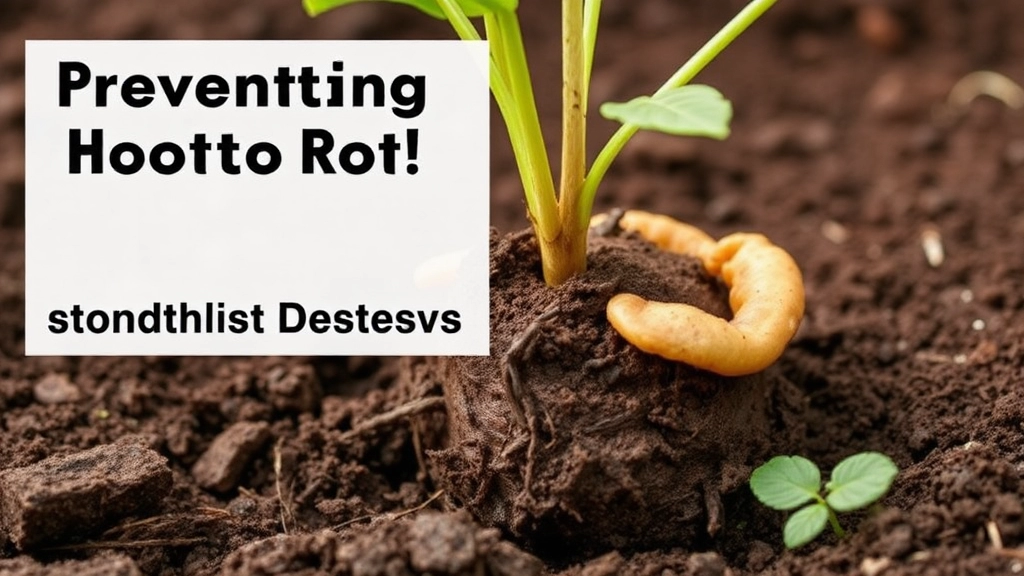
Have you ever noticed your Kalanchoe looking a bit droopy or mushy?
Root rot could be lurking beneath the surface, and it’s a sneaky culprit that can take down even the hardiest of plants.
To keep your Kalanchoe thriving and free from fungal diseases, let’s dive into some practical tips.
1. Water Wisely
- Check the soil: Always feel the top inch of soil. If it’s dry, it’s time to water. If it’s still damp, hold off a bit.
- Use pots with drainage holes: This is a game-changer! It allows excess water to escape, preventing soggy roots.
2. Choose the Right Soil
- Well-draining potting mix: Look for a mix specifically designed for succulents or cacti.
- Add perlite or sand: Mixing in these materials can enhance drainage, making it harder for water to pool.
3. Mind the Humidity
- Keep it dry: Kalanchoes prefer a drier environment. Avoid placing them in overly humid spots, like bathrooms.
- Air circulation: Ensure your plant has good airflow around it. This helps reduce moisture buildup.
4. Watch for Pests
- Inspect regularly: Pests like mealybugs can weaken your plant and make it more susceptible to disease.
- Use neem oil: A natural pesticide, neem oil can help keep those pesky bugs at bay.
5. Rotate Your Plant
- Even sunlight exposure: Rotating your Kalanchoe every few weeks ensures all sides get equal light, promoting healthy growth and reducing stress.
As we delve deeper into caring for your Kalanchoe, understanding seasonal needs is crucial for maintaining vibrant flowers year-round.
### Common Seasonal Challenges
– **Winter**: Low light and temperature can stress your Kalanchoe.
– **Spring**: Rapid growth demands more attention and care.
– **Summer**: Increased heat can lead to dehydration.
– **Autumn**: Transitioning light levels can affect blooming.
### Key Seasonal Care Tips
#### Winter Care:
– **Light**: Place your Kalanchoe in a bright spot, ideally near a south-facing window.
– **Temperature**: Keep the temperature above 10°C to prevent cold shock.
– **Watering**: Reduce watering frequency, allowing the soil to dry out between sessions.
#### Spring Care:
– **Repotting**: Consider repotting if your Kalanchoe has outgrown its pot.
– **Fertilisation**: Start using a balanced fertilizer to support new growth.
– **Sunlight**: Ensure it receives ample sunlight for healthy blooms.
#### Summer Care:
– **Watering**: Increase watering frequency, but avoid soggy soil. Check moisture levels regularly.
– **Shade**: Provide some afternoon shade if temperatures soar above 30°C.
– **Pest Checks**: Regularly inspect for pests, as they thrive in warm weather.
#### Autumn Care:
– **Light Adjustment**: Gradually move your Kalanchoe to a brighter location as days shorten.
– **Watering**: Reduce watering as growth slows down.
– **Preparation for Dormancy**: Start preparing for winter by cutting back on fertilization.
For more specific advice on keeping your Kalanchoe blooming throughout the year, check out [tips for year-round flowers](https://planthq.org/kalanchoe-bloom-season-tips-for-yearround-flowers/). Additionally, if you are looking forward to enhancing your plant’s health during the colder months, you might find the [ultimate guide to flowering Kalanchoe care](https://planthq.org/ultimate-guide-to-flowering-kalanchoe-care-tips-for-blooming/) particularly useful.
How to Revive Dying Kalanchoe Flowers
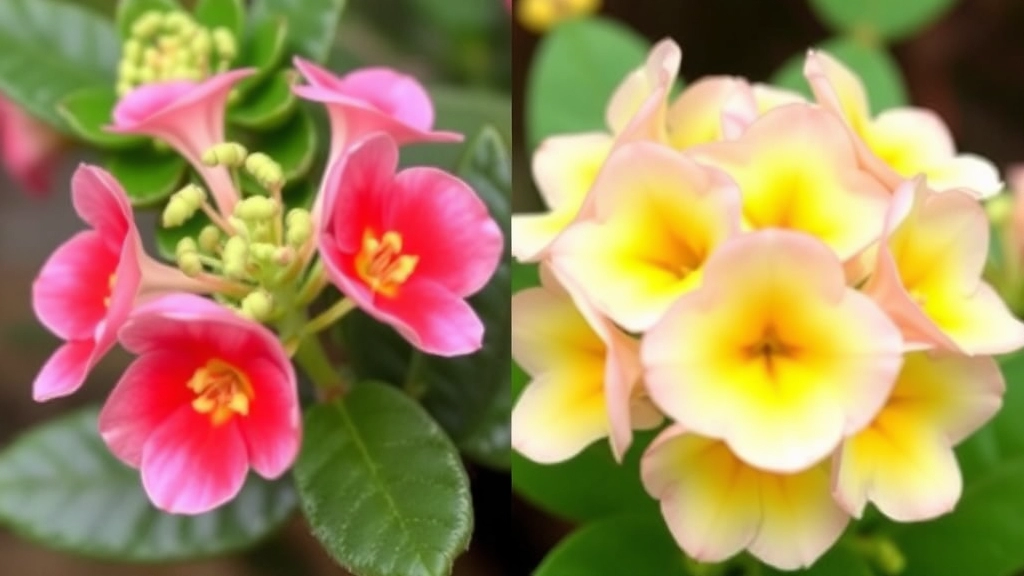
So, you’ve noticed your Kalanchoe flowers looking a bit worse for wear. Don’t panic! There are ways to breathe new life into them.
1. Assess the Situation
First things first, take a good look at your plant. Ask yourself:
- Are the leaves wilting or turning yellow?
- Is the soil soggy or bone dry?
- Are there any signs of pests?
Understanding the problem is half the battle.
2. Adjust Watering Habits
Watering is a common culprit in Kalanchoe care. Here’s what to do:
- If the soil feels dry, give it a good drink.
- If it’s soggy, hold off on watering and let it dry out completely.
3. Check for Sunlight
Kalanchoes love bright, indirect sunlight. If they’re not getting enough light:
- Move them closer to a window.
- Avoid direct sun, as it can scorch the leaves.
4. Prune Dead Leaves and Flowers
Cutting away the dead bits can help the plant focus its energy. Use clean scissors to snip off:
- Yellow or brown leaves.
- Wilted flowers.
5. Repot if Necessary
If the roots are cramped or the soil is poor, consider repotting:
- Choose a pot with good drainage.
- Use a well-draining soil mix, like cactus soil.
6. Fertilize Wisely
Sometimes, a little boost can help:
- Use a balanced fertilizer during the growing season.
- Don’t overdo it—too much can stress the plant.
7. Monitor for Pests
Keep an eye out for any unwanted guests:
- Check under the leaves for pests.
- Use neem oil or insecticidal soap if you spot any.
Reviving your Kalanchoe isn’t just about fixing the immediate issues; it’s about creating a thriving environment for future blooms.
Choosing the Right Fertilizer and Avoiding Overfertilization
When it comes to nurturing your Kalanchoe, selecting the right fertilizer can make all the difference. Many plant owners worry about how to provide their beloved Kalanchoe with the nutrients it needs without risking overfertilization.
Understanding Fertilizer Needs
Kalanchoe thrives on a balanced approach to feeding. Here are some essential tips to consider:
- Type of Fertilizer: Opt for a balanced, water-soluble fertiliser, ideally with an NPK ratio of 15-30-15. This ensures your plant receives adequate nitrogen, phosphorus, and potassium.
- Dilution: Always dilute the fertiliser to half the recommended strength. This reduces the risk of burning the roots.
- Frequency: Fertilize during the growing season, typically from spring to early autumn, every 4 to 6 weeks.
- Avoid Winter Feeding: Kalanchoe enters a dormant phase in winter. Refrain from fertilizing during this period to prevent stress on the plant.
Signs of Overfertilization
It’s crucial to be vigilant for signs that your Kalanchoe may be receiving too much fertiliser:
- Leaf Burn: Yellowing or browning leaf tips can indicate root stress from excess nutrients.
- Stunted Growth: If your plant stops growing altogether, it may be a sign of nutrient overload.
- Salt Buildup: White crust on the soil surface suggests that salts are accumulating, which can harm the roots.
Best Practices for Fertilization
To keep your Kalanchoe healthy and vibrant, follow these best practices:
- Soil Testing: Occasionally test your soil to determine its nutrient levels, helping you adjust your fertilization routine accordingly.
- Organic Options: Consider organic fertilisers, such as compost or well-rotted manure, which provide a slow-release source of nutrients.
- Watering Post-Fertilization: After applying fertiliser, water your plant adequately to help disperse the nutrients and prevent root burn.
For more specific care tips, you might find our Florist Kalanchoe Plant Care Guide particularly useful. Additionally, understanding the Kalanchoe Flowering Season can help you time your fertilization efforts more effectively.
FAQs on Kalanchoe Flowers Dying
Why are my Kalanchoe flowers dying?
Kalanchoe flowers can die due to a variety of reasons, including overwatering, underwatering, poor soil conditions, lack of sunlight, or pest infestations. Assessing the situation will help identify the specific cause.
How can I tell if I am overwatering or underwatering my Kalanchoe?
Overwatering often leads to root rot, yellow leaves, and fungal diseases. Underwatering usually results in shriveling leaves, stunted growth, and brittle leaves. Check the soil moisture to determine the cause.
What type of soil is best for Kalanchoe plants?
Kalanchoe plants thrive in well-draining soil, such as a cactus or succulent mix. The soil should ideally have a slightly acidic to neutral pH (around 6.0 to 7.0) and contain some organic matter for nutrients.
How often should I water my Kalanchoe?
Water your Kalanchoe when the top inch of soil feels dry. Ensure the pot has drainage holes to prevent water from accumulating at the bottom. Adjust the watering frequency based on the season and environmental conditions.
What can I do to prevent root rot in my Kalanchoe?
To prevent root rot, use well-draining soil and pots with drainage holes. Avoid overwatering by checking the soil moisture before watering. Ensure good air circulation and avoid placing the plant in overly humid areas.
Why are the leaves of my Kalanchoe turning yellow?
Yellow leaves can be a sign of overwatering, poor drainage, or nutrient deficiencies. Check the soil moisture, ensure proper drainage, and consider repotting with fresh soil if necessary.
How can I revive my dying Kalanchoe flowers?
To revive dying Kalanchoe flowers, adjust your watering habits, ensure they receive bright indirect sunlight, prune dead leaves and flowers, repot if needed, fertilize wisely, and monitor for pests.
What should I do if I notice pests on my Kalanchoe?
If you notice pests, inspect the plant regularly and use neem oil or insecticidal soap to treat the infestation. Ensure good air circulation and avoid overly humid conditions to deter pests.
How important is drainage for Kalanchoe plants?
Drainage is crucial for Kalanchoe plants. Use pots with drainage holes and consider adding a layer of gravel or small stones at the bottom to enhance drainage. Well-draining soil is essential to prevent root rot and other issues.
Can I use regular potting soil for my Kalanchoe?
Regular potting soil may retain too much moisture for Kalanchoe plants. It’s better to use a cactus or succulent mix, or amend regular potting soil with sand or perlite to improve drainage.
How can I ensure my Kalanchoe gets enough light?
Kalanchoes prefer bright, indirect sunlight. Place them near a window but avoid direct sunlight, which can scorch the leaves. Rotate the plant every few weeks to ensure even light exposure.
References
-
The Spruce: Kalanchoe Plant Profile
-
Gardening Know How: Kalanchoe Care
-
The Old Farmer’s Almanac: Kalanchoe
